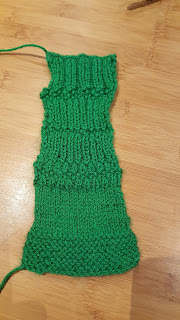Having guests is good. Happy guests are even better. Guests sitting out, mug of coffee in hand, faces turned up to the sun, eyes closed, listening to bird song. That's a wonderful thing. I love to do the same, and my heart swells just a little when I see others pausing a while to do it too. But who wants to share that special holiday moment with the owner sat next to them? I certainly wouldn't. Being that owner means I go somewhere else for my own moment of reflection. Sometimes I sit in the field, my back against the veg plot fence, my bottom on damp grass. I've been known to lie on my back amongst the sheep, staring up at the sky. On a sunny morning, if a cottage is unoccupied, I might be found on the patio, still dressed in pyjamas, fluffy socks and dressing gown, sipping tea, counting under my breath timing the visits of the house martins to their nests. At the end of the day, once chores are done, I drag a deck chair from the wood shed and set it up between the compost bins at the back of the house, where the setting sun warms a patch of grass before dipping below the towering row of beech and horse chestnut trees.
I know I'm lucky to have those moments, and those places to sit, and the fluffy socks (once my favourite purchase from Ethical Superstore but now no longer sold - sob), but it's not enough. Besides, most of the veg plot fence has rotted away, the compost bins make poor company, and owner or not, stealing a chance to sit in a cottage garden feels a little like sneaking into a neighbour's garden, never quite at ease for fear of being spotted.
After creating the cottage gardens, we ran out of steam for our own, and the rear of the house has remained the most neglected patch of land ever since. Every year, for the past six years, when spring turns to summer that fades into autumn, I have declared the coming winter to be the time for things to happen, that there will there no more summers without my own place to sit. Somehow there has always been a more pressing project, fencing to erect, willows to plant, a tree house to be built, a fire pit to dig, a different itch to scratch. This winter there was a tractor shed to build. Building the shed meant building up a flat solid base, which meant having earth moving equipment on site. Watching the big orange caterpillar in action gave me an idea.

After the big orange caterpillar left, I surveyed the sea of mud with its flotsam and jetsam of rocks and miscellaneous unidentifiable metal pieces and plastic tatters that had once been an earth bank, and wondered if perhaps my idea had been more bad than good. Be careful what you wish for. A winter of staring at my mud sea through the landing window, trundling past it on a daily basis with a wheelbarrow of wood for the boiler, and I still couldn't see my end game. "Tell me what you want and I'll build it", Dave promised bravely. The vision wouldn't come. The internet is awash with inspirational outdoor creations, but I couldn't conjure up an image of any one of them atop my sea of mud. "Just build me a sun deck. With a pergola. And a swing seat to hang from the pergola." So he built me a sun deck. Without a pergola. And an imaginary swing seat.
Don't think I'm not grateful. For a man with a bad back, helped by a mother with a bad back, a father with a dodgy leg, and a wife with an attitude, building a deck from scratch in two days without ever losing his temper is no mean feat. And let's not forget Alfred, who saved the day by being the only man I know who would just happen to bring his circular saw with him on holiday.
I have my place in the sun. I have a lonely deckchair. If I ever get bored, I also have a venue for impromptu theatrical performances, a stage upon which to strut and fret. Now all I have to do is create a path across the mud to get to my deck and a garden around it to soften its edges, all before the brambles reclaim their territory. I think it's time for a cup of tea and a sit down in that deckchair.


















































